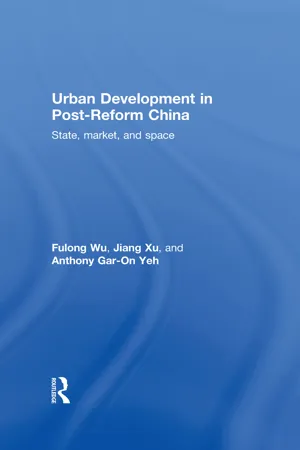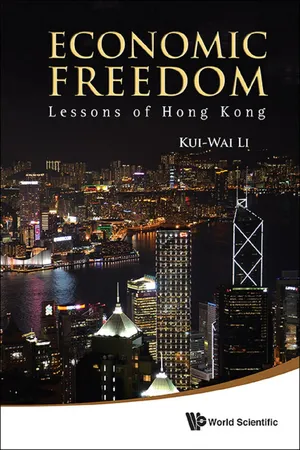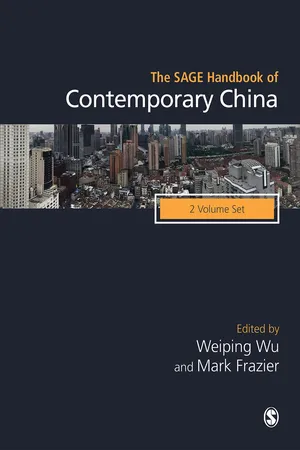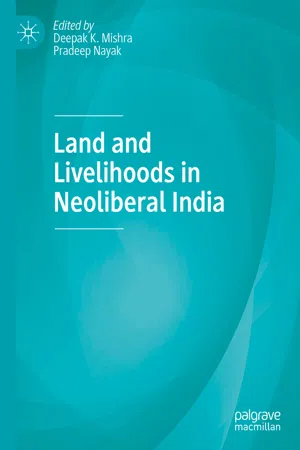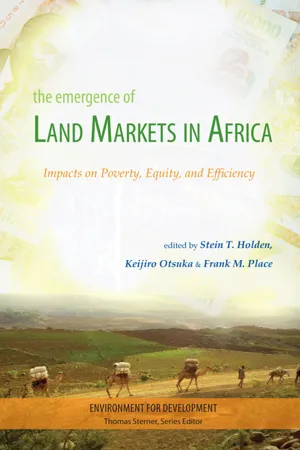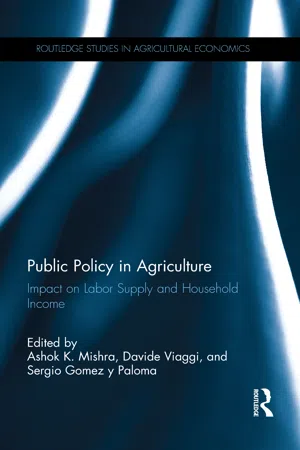Economics
Land Market
The land market refers to the buying and selling of land as a factor of production. It operates based on the principles of supply and demand, with factors such as location, zoning regulations, and natural resources influencing land prices. The land market is a crucial component of the overall real estate market and plays a significant role in urban development and economic growth.
Written by Perlego with AI-assistance
Related key terms
Related key terms
1 of 4
Related key terms
1 of 3
8 Key excerpts on "Land Market"
- eBook - ePub
Urban Development in Post-Reform China
State, Market, and Space
- Fulong Wu, Jiang Xu, Anthony Gar-On Yeh(Authors)
- 2006(Publication Date)
- Routledge(Publisher)
Part I
Market logic
Passage contains an image
2 Establishing the Land Market
Introduction
The urban Land Market operates to allocate land to buyers, through which the city built environment is adjusted according to land price, the quantity of land supplied, the quantity of land demanded, and land-use planning policies. The urban development outcome – spatial structure, density, property price, and even the cost of production – is thus greatly shaped by its Land Market, which in turn is complicated by its socio-economic and political structure. In a free market economy, the Land Market provides for the exchange of land between buyers and sellers in a competitive way. Dowall (1993a: 3) identifies six characteristics of a perfect competitive and efficient market, i.e. well-defined property rights, voluntary participation, a multitude of buyers and sellers, free entry and exit, perfect information, and similarity of product. A competitive Land Market is driven by both demand and supply factors; and the interaction of both factors determines land price (Serra et al. 2004). Land demand is created by population growth, income, and level of economic activities, while on the supply side, physical conditions, land ownership, infrastructure availability, and government policies and regulations determine how much land is supplied to support development.Unlike other markets, the Land Market is in practice not driven by perfectly competitive and efficient forces. Rather, it is a very value-laden venue, for a number of reasons. For example, actors in the Land Market are diverse and have divergent objectives, expectations, and strategies, and some of them may greatly influence market outcomes (Dowall 2000). More fundamentally, land is not a final product for consumption but rather is exclusively used for producing a built environment, which is itself a contested process. The dynamics of the urban land nexus are viewed as a total system that follows the logic of capitalist society (Scott 1980). Harvey's (1978) theory of the circuits of capital reveals the money movement among commodity productions, the development of the built environment, and investment in science, technology and social expenditure. Given the spillover of externalities and the need to provide public goods, the state has to regulate the Land Market and thus intervenes in the urban development process (Yeh and Wu 1996). This is especially true when land is owned by the state, when a multitude of market attributes such as the quantity supplied and the qualification of buyers may be tightly controlled by government policies and public infrastructure investment. Urban planning as a way of collective intervention in the Land Market and land development also plays an important role. Three instrumental methods have been employed by the capitalist state (Roweis and Scott 1981). These are fiscal policies, legal restriction of private rights to use urban land, and direct undertaking of development programmes. Formation and implementation of the policies involve many agencies and actors, who stand for various interests. - eBook - ePub
- Michael Oxley(Author)
- 2004(Publication Date)
- Bloomsbury Academic(Publisher)
Chapter 2Markets, Development, Institutions and EfficiencyThroughout the world the development of housing depends on the combined operation of markets and public policy. In detail, markets work in different ways in different social, political and institutional contexts, but they have key elements that pervade a variety of settings. The process of development involves changes in the use of land and buildings that create new built-environment assets. Governments are not content to allow markets to wholly determine this process and the results or outcomes, and they therefore influence these processes through public policy. An important element of such public policy is land-use planning.In this chapter we provide a backcloth against which the policy and planning rationale, actions and outcomes of subsequent chapters can be displayed. An essential feature of this backcloth is an examination of how housing and Land Markets might be expected to operate in the absence of planning. This will be done by applying the concepts of mainstream economics to the demand for housing and land and the production of new housing. As explained in Chapter 1 , in mainstream economics individuals and firms trade competitively in markets to maximize utility or individual well-being and to maximize profits. We will examine the role of prices, the nature of explicit and implicit markets, and the problem of determining the boundary of a housing market area.An important theoretical strand to the economics of land use and development has been provided by location theories, and some key elements of such theories, their propositions and limitations will be set out. Conceptualizing and modelling location are issues that have challenged economists and planners, and the issues will be explored and the options examined.Mainstream economists’ market-orientated analyses of development processes have in recent years been both challenged and supplemented by institutional analysis. Several institutional perspectives will be explored, the nature and role of property market institutions will be examined, and the contribution of an institutional approach evaluated. It will be shown that institutional analysis provides a useful complement to, rather than a substitute for, mainstream economics. - eBook - ePub
Economic Freedom
Lessons of Hong Kong
- Kui-Wai Li(Author)
- 2012(Publication Date)
- WSPC(Publisher)
12
Land, Property and Housing
12.1 Introduction
Land is regarded as a form of natural resources in economics, and land has been treated differently in different economic freedom regimes. In some free economies, land can be bought and sold privately, and individuals can buy land for their own usage. In other free economies, especially land-constrained economies, the state becomes the owner of all land in the territory, but the government will allot, distribute and sell land for different usages: residential, commercial, industrial and open woodland. In this case, land is purchased or leased from the government for a period that lasts for decades. As such, individuals do not have the ownership right, but have the use right in the acquired land. In either case, individuals and corporations and institutions are free to acquire land for private usage. Rental arrangements are also very common in free economies. Individuals can acquire land resources through rental from the owners.The three terms of real estate, housing and properties could mean the same, but would convey different implications between usage and ownership, between necessities and non-necessities, and between investment and speculation. Housing is the term that conveys the provision of an essential, basic and necessity good. Housing could simply provide a shelter to individuals, a basic human need and exclude luxurious considerations. Many governments in free economies pursue a housing policy for the needy and ensure a basic living environment for all.Both properties and real estate imply freedom of ownership. In both cases, they carry an element of investment. The owners can either reside in their purchased property or rent it out to collect rental income. The term real estate could give a broader coverage and implies a large piece of land property or a collection of housing properties that could spread over different locations. In most cases, properties and real estates are long-term investments that will generate cumulative returns over the years or decades. In some cases, real estates could be a piece of raw farmland or undeveloped land kept for future development. The ownership of properties and real estates are considered as wealth of an individual or a business corporation, as they provide either a stream of services (by living in the property) or a stream of income (rental income). The wealth from the ownership is realized when the property or real estate is sold in the market. Over time and given a stable economic environment, there would be an asset appreciation to the property. - eBook - ePub
- Weiping Wu, Mark Frazier, Weiping Wu, Mark Frazier(Authors)
- 2018(Publication Date)
- SAGE Publications Ltd(Publisher)
Some scholars have a different assessment. For instance, Xu, Yeh, and Wu (2009: 895) argue that China has thoroughly retreated from the regime of ‘free land allocation’ – i.e. getting land without paying a price – except for a very limited amount of land provided for military or other non-profit uses. The fact that the Chinese land market is still characterized by ‘primitive’ forms of transaction should not be confused with a lack of land sales – a farmer who barters fish for vegetables without using money or paying a stall fee in the open market is still a market trader. Therefore, they argue that the amount of land produced by market behaviors (market, quasi-market, and primitive form) is extensive, although it might not be labeled as leased land. Land, as a critical resource, is distributed primarily through land sales. Non-market transactions (administrative allocations) are limited.Now, the question is: if land auctions could bring more land-related benefits to the government, then what has prevented the government from using them? For this question, there are different interpretations. Many explanations frequently rest mainly on the ambiguity of property rights (Zhu, 2002) and political considerations and, in particular, on the different objectives of the state and its bureaucrats. At one end of the spectrum, some argue that China's property industry illustrates to the utmost what the ‘power economy’ is all about because political power is often entangled with private developers to pursue personal gain (Bi, 1999). This argument seems particularly relevant since so many high-ranking local officials and their relatives are shareholders in prestigious real estate projects (Xu, Yeh, and Wu, 2009). In particular, the fact that the Party governs society represents a political constraint which shapes market formation (Holz, 2007).At the other end of the spectrum, scholars argue that under-the-table dealings allow the local state to manipulate land prices to appeal to private developers (Wu, 1999). Once the governments have attracted investors into their jurisdictions, they can create a self-generating process of capital gains (Wu, Xu, and Yeh, 2007). For example, localities can benefit through in-kind land income which reduces the amount they have to remit to the central state. The local state uses the market to relinquish its responsibility (e.g. to externalize investment risks) and to overcome hurdles to economic growth (e.g. lack of capital). In a more specific way, with the quasi-market approach, e.g. negotiation, the monetary benefit might be smaller than with a market-based approach, nevertheless, the hidden benefits and/or planning gains compensate for the low cash benefit. In addition, because the financial hurdle for entering urban development is low, more development projects are attracted. In a way, the preference of local government for quasi-market forms is because, although the government might not get the highest land price, it can get related tax benefits and other indirect benefits in terms of employment and GDP growth. Xu and Yeh (2005) explicate why quasi-market approach is preferred. Because the local state is prevented by the Budget Law of China from collecting capital directly from local and overseas financiers, it has to rely on its investment arms or other investors to barter capital from financiers. This can be reflected by the rising land circulation in the secondary market and mortgage rate. The research of Lin and Ho (2005) also confirms that using land to barter capital from financiers is more widely practiced in provinces where monetary capital is in short supply. - eBook - ePub
- Deepak K. Mishra, Pradeep Nayak, Deepak K. Mishra, Pradeep Nayak(Authors)
- 2020(Publication Date)
- Palgrave Macmillan(Publisher)
2007 ).Number of studies, across the regions in India, have established the fact the rural markets are interlinked (Bhaduri 1983 ; Basu 1986 ; Sarap 1991 , 1996 ). The imperfections in credit and labour markets have resulted in imperfection in Land Markets (Eswaran and Kotwal 1985 ). The assured supply of credit and liquidity would reduce interim transactions and may empower the small farmers to buy land (Vijay 2009 ).As the economy is being transformed from traditional agricultural to modern manufacture and service-based economy, the demand for land increases both from agriculture and non-agriculture-manufacture and service. The increasing demand influences the price of the land and this influence is higher after land acquires the nature of inelastic supply. The rise in population also exerts pressure on the per capita supply of the land and its prices. The institutions operating around the use of land such as ownership pattern, tenancy, credit market and so on also influence the price of the land.The rising prices during 1970s and 80s were due to the impact of Green Revolution and the diversification of rural economy (Shergill 1986 ; Sarap 1996 ). The rate of growth of agricultural land was approximately 7.5 per cent per annum during 1970–87 in Parhil, a village in Utter Pradesh, which is slightly faster than the growth of sale price of wheat (5 per cent per annum) (Saith and Tankha 1997 ). The price per unit of land is inversely correlated with the size of plot. Higher price per unit of land would be commanded when farm land is transacted for residential and other non-agricultural use (Saith and Tankha 1997 ). The non-productive use of agricultural land, like collateral use (Lancaster 1966 ), store over value for surplus money, speculative motive, tax benefits and so on may increase the purchase price of agricultural land over and above the present value of net returns. The differential growth rate between rent and land price of land is attributable, inter alia, to the unregulated Land Market and excess liquidity at the micro level (Hirashima 2008 ) and to increasing land scarcity with increasing money supply from expanded credit, rising incomes from white, black and foreign sources and also increasing wealth inequalities (Chakravorthy 2013 ). When transactions occur within relatives, friends and same community, the price may be lesser than the market price (Sarap 1998 ; Saith and Tankha 1997 ; Tsoodle et al. 2006 ). The ‘land bubble’ has accelerated in recent years with rapid economic growth under free play of Land Market (Hirashima 2008 ) and it has sustained for longer period as it is funded by rising incomes from white, black and foreign money (Chakravorthy 2013 ). The income of land purchasers is not correlated with agriculture production and hence demand for land mostly comes from people with non-agricultural income sources (Sarap 1996 ) and non-cultivating households (Vijay 2012 - eBook - ePub
- Tom Tietenberg, Lynne Lewis(Authors)
- 2018(Publication Date)
- Routledge(Publisher)
In this chapter, we shall begin to investigate these questions. How does the market allocate land? How well do market allocations fulfill our social criteria? Where divergences between market and socially desirable outcomes occur, what policy instruments are available to address the problems? How effective are they? Can they restore conformance between goals and outcomes?The Economics of Land Allocation
Land Use
In general, as with other resources, markets tend to allocate land to its highest-valued use, as reflected by the users’ willingness to pay or willingness to accept payment. Consider Figure 10.1 , which graphs three hypothetical land uses— residential development, agriculture, and wilderness.1 The left-hand side of the horizontal axis represents the location of the marketplace where agricultural produce is sold. Moving to the right on that axis reflects an increasing distance away from the market.The vertical axis represents net benefits per acre. Each of the three functions, known in the literature as bid rent functions, records the relationship between distance to the center of the town or urban area and the net benefits per acre received from each type of land use. A bid rent function expresses the maximum net benefit per acre that could be achieved by that land use as a function of the distance from the center. All three functions are downward sloping because the cost of transporting both goods and people lowers net benefits per acre for more distant locations.Figure 10.1The Allocation of LandAccording to Figure 10.1 , a market process that allocates land to its highest-valued use would allocate the land closest to the center to residential development (a distance of A), agriculture would claim the land with the next best access (A to B), and the land farthest away from the market would remain wilderness (from B to C - eBook - ePub
The Emergence of Land Markets in Africa
Impacts on Poverty, Equity, and Efficiency
- Stein T Holden, Keijiro Otsuka, Frank M Place, Stein T Holden, Keijiro Otsuka, Frank M Place(Authors)
- 2010(Publication Date)
- Routledge(Publisher)
PART II Land Markets, Allocative Efficiency, and Poverty Who Has Access to Land? CHAPTER 3 Land Rental Markets Transaction Costs and Tenure Insecurity in Rural Ethiopia K LAUS D EININGER, D ANIEL A YALEW A LI, AND T EKIE A LEMU n situations in which the distribution of land ownership is different from the operationally optimal level, reallocation mechanisms—such as rental markets—that transfer this factor to its most productive use play a key role in increasing total production and enhancing economic efficiency. Historically, when most of the land was cultivated under rudimentary traditional technology and nonagricultural labor markets were virtually nonexistent, the majority of such land transactions occurred between large landlords, often absentees, and small tenants with few alternative opportunities, essentially compensating for a relatively skewed distribution of land ownership. Increasing complexity of the agricultural production processes implies that imperfections in other markets, which are frequent in rural areas of developing countries, will affect the nature and direction of rental contracts. Moreover, with economic development, a number of other disequilibrating factors such as changes in the demographic structure, nonagricultural demand for land, and an array of other reasons for land transactions—from producers’ desires to take advantage of new opportunities from off-farm employment to temporary migration caused by differential agricultural ability—have started to complement, and in many cases substitute for, the “traditional” model of land leasing from large to small landlords (Sadoulet et al. 2001) - eBook - ePub
Public Policy in Agriculture
Impact on Labor Supply and Household Income
- Ashok K. Mishra, Davide Viaggi, Sergio Gomez y Paloma(Authors)
- 2017(Publication Date)
- Routledge(Publisher)
Chapter 13Land Markets in EuropeInstitutions and market outcomes1
Pavel Ciaian, d’Artis Kancs, and Dusan DrabikIntroduction
Agricultural Land Markets in the European Union are subject to significant policy interventions. Land Market exchanges and land allocation as input in production are currently not taking place in a free market environment. Three types of Land Market interventions are present in the European Union: tenure-/ownership regulations, environmental regulations, and area-based subsidies. Tenure-/ownership regulations regulate land sales and rental transactions in terms of the right to use, control, and transfer land. Environmental regulations regulate land use by granting financial incentives or by imposing restrictions to farming activities with the aim of protecting and conserving land and the environment. The main part of the Common Agricultural Policy (CAP) support is allocated as land-based subsidies with the aim of supporting farmers’ income and promoting sustainable development of rural areas.Land Market interventions vary considerably across the EU Member States, reflecting the variation in the quality and abundance of land as well as the differences in historical, societal and political developments. The implementation of tenure-/ownership regulations is not necessarily driven by efficiency gains for society but by political economy factors, largely determined by wealth redistributive effects among market participants (Swinnen 2002; Ciaian et al. 2010; Swinnen et al. 2014b). The primary motivation of the introduction of environmental regulations is to address market failures linked to the production of public goods and externalities by agricultural sector. Area-based subsidies
Index pages curate the most relevant extracts from our library of academic textbooks. They’ve been created using an in-house natural language model (NLM), each adding context and meaning to key research topics.
Explore more topic indexes
Explore more topic indexes
1 of 6
Explore more topic indexes
1 of 4
